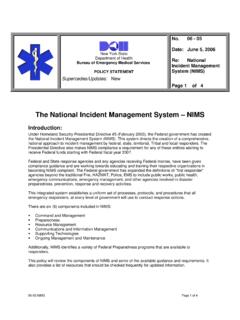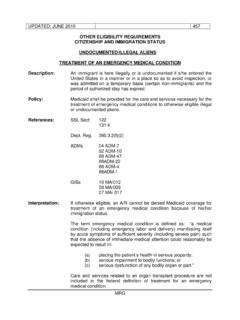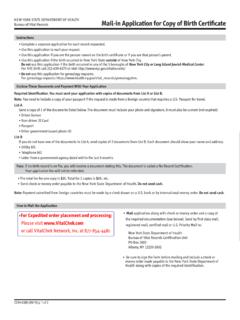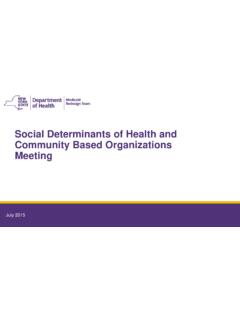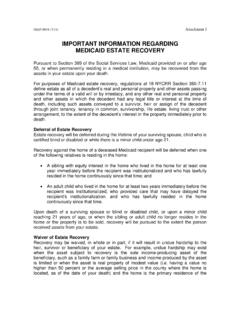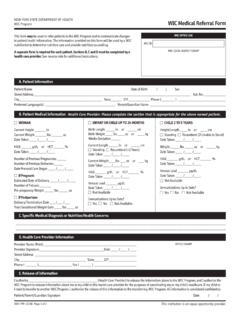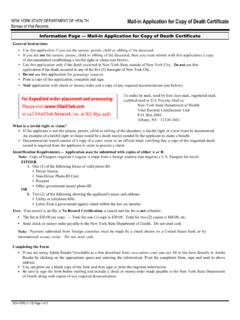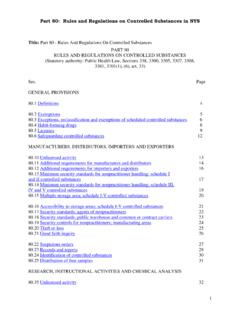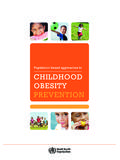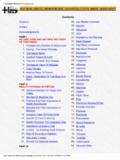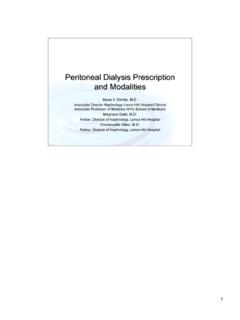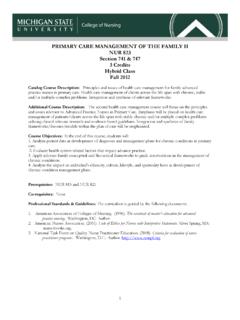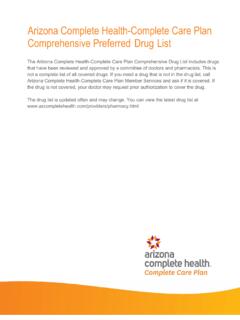Transcription of Crediting Foods in CACFP
1 Crediting Foods inCACFPA cknowledgmentsIn accordance with Federal civil rights law and Department of Agriculture (USDA) civil rights regu-lations and policies, the USDA, its Agencies, offices, and employees, and institutions participating in or administering USDA programs are prohibited from discriminating based on race, color, national origin, sex, disability, age, or reprisal or retaliation for prior civil rights activity in any program or activity conducted or funded by USDA. Persons with disabilities who require alternative means of communication for program information ( Braille, large print, audiotape, American Sign Language, etc.)
2 , should contact the Agency (State or local) where they applied for benefits. Individuals who are deaf, hard of hearing or have speech disabilities may contact USDA through the Federal Relay Service at (800) 877-8339. Additionally, program information may be made available in languages other than English. To file a program complaint of discrimination, complete the USDA Program Discrimination Complaint Form, (AD-3027) found online at: , and at any USDA office, or write a letter addressed to USDA and provide in the letter all of the information requested in the form.
3 To request a copy of the complaint form, call (866) 632-9992. Submit your completed form or letter to USDA by: (1) mail: Department of Agriculture Office of the Assistant Secretary for Civil Rights 1400 Independence Avenue, SW Washington, 20250-9410; (2) fax: (202) 690-7442; or (3) email: This institution is an equal opportunity provider. New York State Department of Health1 Table of ContentsPurpose of this Guide ..2 Eat Well Play Hard ..3 Meal Pattern Requirements and Recommendations.
4 4 Child Nutrition (CN) Label ..6 Milk ..7 Vegetables/Fruits ..13 Grains/Bread ..21 Meat/Meat Alternates ..31 Infant Foods ..39 Water ..47 Appendix A: Sample Menus ..49 Appendix B: Recipe Analysis ..50 Appendix C: Meat Alternates for Vegetarian Menu Planning ..51 Appendix D: Choking Prevention ..52 Appendix E: Milk Substitutes ..53 Appendix F: How to Identify Whole Grains ..54 Index ..55 Crediting Foods in CACFP2 Crediting Foods in CACFP is a guide to help you determine if a food counts toward the Child and Adult Care food Program ( CACFP ) Meal Pattern Foods are those that may be counted toward meeting the requirements for a reimbursable meal.
5 Foods are creditable based on the following: nutrient content function of the food in a meal CACFP Meal Pattern requirements food and Drug Administration and United States Department of Agriculture standards and policy decisionsNon-creditable Foods are those that do not count toward the meal pattern requirements. However, these Foods may supply additional nutrients and add color, taste and texture to meal is reimbursable only if it contains creditable Foods for each required component in the amounts outlined in the CACFP Meal guide has a section for each meal pattern component.
6 Milk vegetables/fruits grains/bread meat/meat alternatesEach section has answers to commonly asked questions and a list of Foods that are counted or often questioned for that help you make the healthiest choices for the children in your care, each food component list has three sections: Recommended These are healthy food choices that meet CACFP Meal Pattern requirements. Serve these Foods often. Not Recommended but Allowed These are less healthy food choices that meet CACFP Meal Pattern requirements.
7 Serve these Foods only occasionally. Not Allowed These Foods do not count toward CACFP Meal Pattern guide does not include every food that may be served. For further information, check the United States Department of Agriculture's food Buying Guide for Child Nutrition Programs. It is available at the following website: This guide will help you decide how much food to prepare to meet CACFP Meal Pattern you have any further questions, please call 1-800-942-3858 or visit of this GuideNew York State Department of Health3 Mealtime Environment for ChildrenAn important part of promoting the health of children is providing healthy food served in a pleasant, enjoyable environment.
8 Follow these tips to promote good eating habits in children. Serve food family style, with children serving themselves from common bowls and pitchers. Have adults sit with children and eat the same food that the children are eating. Let children decide how much and what Foods they wish to eat. Encourage, but do not force, children to try new Foods . Focus on each other and the food you are all eating. Keep the TV turned Well Play HardCACFP is concerned with the health of New York State children because: The most common nutrition concern is childhood obesity .
9 In New York State, 29% of low-income preschoolers and 34% of school-age children are overweight or obese. Children who remain overweight through their teens are more likely to be overweight as adults. Overweight adults are at higher risk for diabetes, heart disease and other medical encourages New York State child care programs to get children and adults to Eat Well and Play Hard by adopting these five strategies. As a child care provider, you are a vital resource in reversing these statistics.
10 From the Foods and beverages you choose to serve, to the amount of time you allot for physical activity, you have a tremendous influence on the health and well-being of children in Increase physical activity appropriate for their age Provide opportunities for children to engage in daily active play. Children should play at least 60 minutes per day. Encourage caregivers and parents to be physically active with children2. Decrease screen time Turn off the TV, video tapes, DVDs and screen games, tablets and phones No screen time for children under 2 years No screen time during meals and snacks3.

